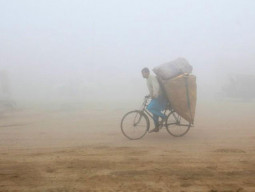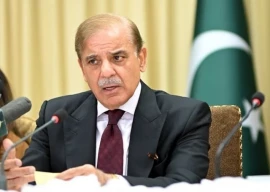
“We need to prepare to cope with the negative impacts of heat waves, which are likely to become more frequent and intense in the future,” the minister said on Thursday while speaking at the launch of a report on heat waves.
A severe heat wave struck the country in June, which caused high number of fatalities, especially in Karachi. According to the report, most of the country was under the grip of a heat wave from June 17 to June 24, with record high temperatures recorded in southern parts of the country. “The temperature ranged from 49 degree Celsius in Larkana and Sibi to 45 degree Celsius in Karachi. In southern Punjab, 40 degree Celsius was recorded in Multan, whereas several areas of Balochistan were also affected…temperature touched 49 degree Celsius in Sibi and Turbat,” the report says.
In late June, the minister formed a committee of experts to investigate the causes of the blistering heat wave and to propose measures to overcome the fallout of future heat waves.
While talking about the causes of the recent wave, Khan said that the summer afternoons in Karachi on June 15 and June 16 displayed normal airborne moisture quantity and transport into the area from the Arabian Sea. “The atmospheric conditions went anomalous after a ridge (extension of high pressure area) was extended over Balochistan and adjoining parts of the country, including Karachi,” he said while quoting the report.
“The formation of this ridge led to a weakened incoming sea breeze transport process from the Arabian Sea and consequently reduced the humidity levels below normal over Karachi on the afternoon of June 17. The ridge further accentuated on June 18 and penetrated more into south and eastward parts of the country,” he said.
“The analysis of the lower atmosphere (1500 - 3000m above sea level) reveals that due to a low pressure area over northeastern parts of India and a shallow low over southeastern parts of Pakistan, the wind direction over Karachi remained northwesterly, which brought dry and modified warm air to Karachi,” he explained.
Lead author of the report, former director general of the Pakistan Meteorological Department Dr Qamaruz Zaman Chaudhry said that the atmospheric conditions mentioned above were the main cause of severe heatwave.
Other factors such as unplanned urbanisation, deforestation, lack of green areas and open spaces, poor hygiene practices, awareness, green building and roads materials and transportation systems created heat island effect which added up to the extreme temperatures.
“Frequent and prolonged power outages, water supply constraints further decreased the capacity of inhabitants to combat adverse impacts of the heat wave, which resulted in an unprecedented number of casualties in Karachi,” he added.
Giving further details, Pakistan Meteorological Department Director-General Dr Ghulam Rasul said that due to a low pressure area over the northeast Arabian Sea, surface winds in Karachi from the morning to the early afternoon remained easterly and northeasterly during the heat wave, which brought hot and dry air from Rajasthan in India, whereas surface winds in the late afternoon remained mostly westerly/southwesterly which brought moisture and increased the humidity.
The expert group emphasised in the report that the recent heat wave demands a comprehensive strategy to cope with disastrous heat waves.
Published in The Express Tribune, July 31st, 2015.

















COMMENTS
Comments are moderated and generally will be posted if they are on-topic and not abusive.
For more information, please see our Comments FAQ